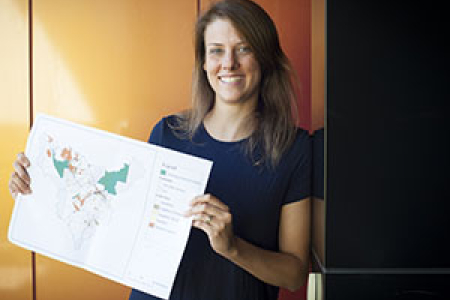Daly River survey reveals potential for development
A survey has revealed many Daly River catchment residents would be comfortable with a level of land development for economic purposes in the region.
The survey of more than 200 respondents showed that many residents believed they could maintain their outdoors lifestyles if up to 10,000 square kilometres of land were developed.
Charles Darwin University Research Institute for the Environment and Livelihoods Research Fellow, Dr Vanessa Adams said respondents appeared most content with land development of up to 10 per cent (5000 km²) in the area.
Dr Adams said respondents valued using the catchment area for activities, such as fishing, camping, preserving traditional cultural values, and for future generations to enjoy.
“Residents have been very clear that they are living in these places because they are special,” Dr Adams said.
She said about 20 per cent (10,000 km²) of the 50,000 km² catchment area was suitable for development.
“The survey suggests that residents would accept up to 20 per cent of the land be allocated for development,” Dr Adams said. “The 20 per cent limit does not actually constrain development because only approximately 20 per cent of the catchment is suitable for clearing.
“That amount would probably get you all the appropriate land available for clearing.”
Dr Adams said the survey suggested many residents supported current development guidelines already in place for the area.
She said the survey could provide information to direct future initiatives in the Daly River catchment.
Dr Adams said about 5 per cent (2500 km²) of the catchment was currently cleared for development.
The 2013 survey was funded by the National Environmental Research Program.
The area of suitable land for development was calculated as part of Dr Adam’s article, co-written with James Cook University Professor Robert Pressey, “Uncertainties around the Implementation of a Clearing-Control Policy in a Unique Catchment in Northern Australia: Exploring Equity Issues and Balancing Competing Objectives”.
